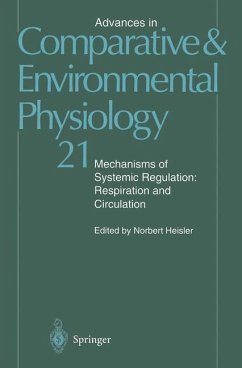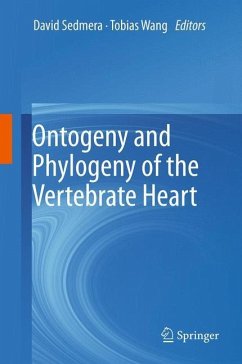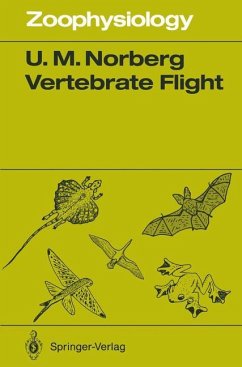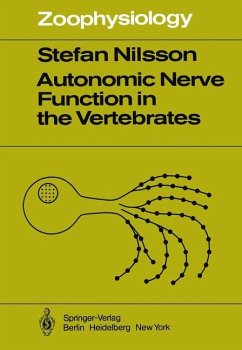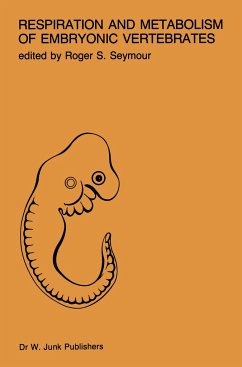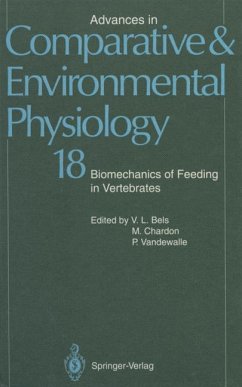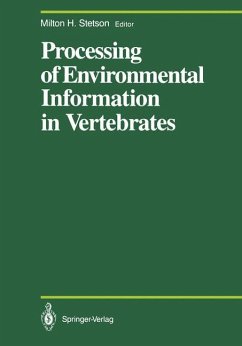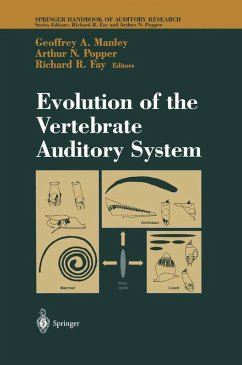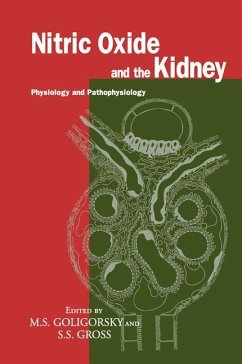
Cardio-Respiratory Control in Vertebrates
Comparative and Evolutionary Aspects
Herausgegeben: Glass, Mogens L.; Wood, Stephen C.

PAYBACK Punkte
77 °P sammeln!
The focus of this book is the evolution of cardiovascular and respiratory control in vertebrates. Life originated in water, which has constantly changing temperatures and O2 levels. Fish gills can extract up to 80% of their inspired O2, because they have a countercurrent bloodstream. Oxygen sensors have been found within the gill arches of ray-finned fish such as carp and trout, and these O2 sensors screen the inspired water and the capillary blood.
Very likely, land vertebrates and the lungfish arose as a sister group, and both possess real lungs. Lungfish include 6 species, inhabiting shallow lakes or rivers, whereas the second ramification includes all the land vertebrates. A possible ancestor to the lungfish and land vertebrates has been discovered in China, and this fossil (Styloichthys) bridges a gap. Living 417 million years ago, it could represent one of the last ramifications before the common ancestor to the lungfish and land vertebrates. In addition, rather constant atmospheric O2 levels permit a joint acid-base regulation by the lung and the kidney. Likewise, lungfish and land vertebrates share a central control of pulmonary ventilation, while the peripheral receptor contribution to acid-base regulation is minor.
Very likely, land vertebrates and the lungfish arose as a sister group, and both possess real lungs. Lungfish include 6 species, inhabiting shallow lakes or rivers, whereas the second ramification includes all the land vertebrates. A possible ancestor to the lungfish and land vertebrates has been discovered in China, and this fossil (Styloichthys) bridges a gap. Living 417 million years ago, it could represent one of the last ramifications before the common ancestor to the lungfish and land vertebrates. In addition, rather constant atmospheric O2 levels permit a joint acid-base regulation by the lung and the kidney. Likewise, lungfish and land vertebrates share a central control of pulmonary ventilation, while the peripheral receptor contribution to acid-base regulation is minor.
Hopefully, this book will be taken off of the shelf frequently to be studied carefully over many years. More than 40 researchers were involved in this project, which examines respiration, circulation, and metabolism from ?sh to the land vertebrates, including human beings. A breathable and stable atmosphere ?rst appeared about 500 million years ago. Oxygen levels are not stable in aquatic environments and exclusively water-breathing ?sh must still cope with the ever-changing levels of O 2 and with large temperature changes. This is re?ected in their sophisticated count- current systems, with high O extraction and internal and external O receptors. 2 2 The conquest for the terrestrial environment took place in the late Devonian period (355-359 million years ago), and recent discoveries portray the gradual transitional evolution of land vertebrates. The oxygen-rich and relatively stable atmospheric conditionsimpliedthatoxygen-sensingmechanismswererelativelysimpleandl- gain comparedwith acid-base regulation. Recently, physiology has expanded into related ?elds such as biochemistry, molecular biology, morphology and anatomy. In the light of the work in these ?elds, the introduction of DNA-based cladograms, which can be used to evaluate the likelihood of land vertebrates and lung?sh as a sister group, could explain why their cardio-respiratory control systems are similar. The diffusing capacity of a duck lung is 40 times higher than that of a toad or lung?sh. Certainly, some animals have evolved to rich high-performance levels.




